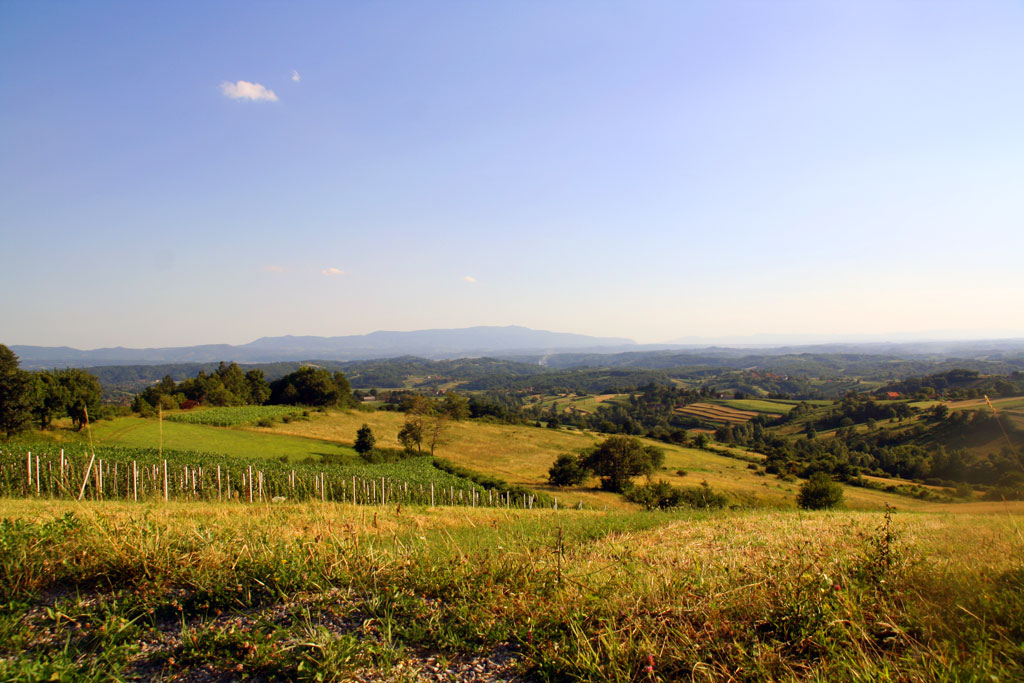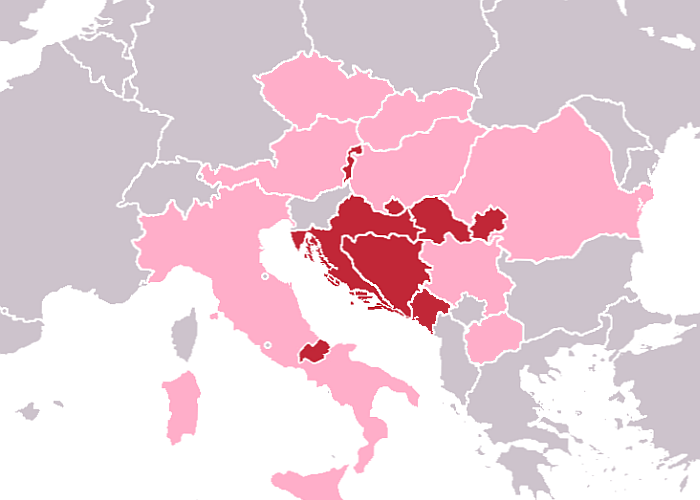|
Petrica Kerempuh
Petrica Kerempuh is a literary character who appears in a number of Croatian and former Yugoslav works, but is most famous for his appearance in the critically lauded '' The Ballads of Petrica Kerempuh'' by Croatian author Miroslav Krleža, who wrote in the Kajkavian dialect. Petrica Kerempuh is a prophet of the people and a cynical commentator on contemporary events. The name is derived from the dialectical word ''kerempuh'', meaning "belly" or "abdomen", with a figurative meaning suggesting a person of cunning or a merrymaker. The earliest origins appear to be from Jakob Lovrenčić's printing of the book ''Petrica Kerempuh iliti čini i življenje človeka prokšenoga'' ("Petrica Kerempuh or the Life of a Prodigal Man") in 1834, which is a translation of a German book on the travels and adventures of Till Eulenspiegel. In 1936, Krleža published ''The Ballads of Petrica Kerempuh'' in Ljubljana and it was received very well. The book went on to be considered an important moment ... [...More Info...] [...Related Items...] OR: [Wikipedia] [Google] [Baidu] |
Hungarian Language
Hungarian () is an Uralic language spoken in Hungary and parts of several neighbouring countries. It is the official language of Hungary and one of the 24 official languages of the European Union. Outside Hungary, it is also spoken by Hungarian communities in southern Slovakia, western Ukraine (Subcarpathia), central and western Romania ( Transylvania), northern Serbia ( Vojvodina), northern Croatia, northeastern Slovenia ( Prekmurje), and eastern Austria. It is also spoken by Hungarian diaspora communities worldwide, especially in North America (particularly the United States and Canada) and Israel. With 17 million speakers, it is the Uralic family's largest member by number of speakers. Classification Hungarian is a member of the Uralic language family. Linguistic connections between Hungarian and other Uralic languages were noticed in the 1670s, and the family itself (then called Finno-Ugric) was established in 1717. Hungarian has traditionally been assigned to ... [...More Info...] [...Related Items...] OR: [Wikipedia] [Google] [Baidu] |
Gornja Stubica
Gornja Stubica () is a village and municipality in Krapina-Zagorje County, Croatia. According to the 2011 census, it has 5,284 inhabitants. The absolute majority of them are Croats. Gornja Stubica is twinned Twinning (making a twin of) may refer to: * In biology and agriculture, producing two offspring (i.e., twins) at a time, or having a tendency to do so; * Twin towns and sister cities, towns and cities involved in town twinning * Twinning inst ... with: * Slovenske Konjice, Slovenia (since 2013) References Populated places in Krapina-Zagorje County Municipalities of Croatia {{KrapinaZagorje-geo-stub ... [...More Info...] [...Related Items...] OR: [Wikipedia] [Google] [Baidu] |
Petrica Kerempuh
Petrica Kerempuh is a literary character who appears in a number of Croatian and former Yugoslav works, but is most famous for his appearance in the critically lauded '' The Ballads of Petrica Kerempuh'' by Croatian author Miroslav Krleža, who wrote in the Kajkavian dialect. Petrica Kerempuh is a prophet of the people and a cynical commentator on contemporary events. The name is derived from the dialectical word ''kerempuh'', meaning "belly" or "abdomen", with a figurative meaning suggesting a person of cunning or a merrymaker. The earliest origins appear to be from Jakob Lovrenčić's printing of the book ''Petrica Kerempuh iliti čini i življenje človeka prokšenoga'' ("Petrica Kerempuh or the Life of a Prodigal Man") in 1834, which is a translation of a German book on the travels and adventures of Till Eulenspiegel. In 1936, Krleža published ''The Ballads of Petrica Kerempuh'' in Ljubljana and it was received very well. The book went on to be considered an important moment ... [...More Info...] [...Related Items...] OR: [Wikipedia] [Google] [Baidu] |
Miroslav Krleža Radićeva ZG
Miroslav may refer to: * Miroslav (given name), a Slavic masculine given name * ''Young America'' (clipper) or ''Miroslav'', an Austrian clipper ship in the Transatlantic case oil trade * Miroslav (Znojmo District), a town in the Czech Republic See also * Miroslava (other) Miroslava may refer to: * Miroslava (actress), Mexican actress in the 1950s ** ''Miroslava'' (film), a 1993 film about the actress * Miroslava of Bulgaria, a daughter of tsar Samuil of Bulgaria * Miroslava, Iași, a commune in Iaşi County, Roma ... * Mirosław (other) {{disambiguation ... [...More Info...] [...Related Items...] OR: [Wikipedia] [Google] [Baidu] |
Zagreb
Zagreb ( , , , ) is the capital and largest city of Croatia. It is in the northwest of the country, along the Sava river, at the southern slopes of the Medvednica mountain. Zagreb stands near the international border between Croatia and Slovenia at an elevation of approximately above sea level. At the 2021 census, the city had a population of 767,131. The population of the Zagreb urban agglomeration is 1,071,150, approximately a quarter of the total population of Croatia. Zagreb is a city with a rich history dating from Roman times. The oldest settlement in the vicinity of the city was the Roman Andautonia, in today's Ščitarjevo. The historical record of the name "Zagreb" dates from 1134, in reference to the foundation of the settlement at Kaptol in 1094. Zagreb became a free royal city in 1242. In 1851 Janko Kamauf became Zagreb's first mayor. Zagreb has special status as a Croatian administrative division - it comprises a consolidated city-county (but separate f ... [...More Info...] [...Related Items...] OR: [Wikipedia] [Google] [Baidu] |
Dolac Market
Dolac () is a farmers' market located in Gornji Grad - Medveščak city district of Zagreb, Croatia. Dolac is the most visited and the best known farmer's market in Zagreb, well known for its combination of traditional open market with stalls and a sheltered market below. It is located only a few dozen meters away from the main city square, Ban Jelačić Square Ban Jelačić Square (; hr, Trg bana Jelačića) is the central square of the city of Zagreb, Croatia, named after Ban Josip Jelačić. The official name is Trg bana Jelačića. The square is colloquially called ''Jelačić plac''. It is locat ..., between the oldest parts of Zagreb, Gradec and Kaptol. The Dolac market Zagreb is centrally located right behind the town’s main square. The daily market, on a raised square a set of stairs up from Jelačić, has been the city’s major trading place since 1930. Farmers from surrounding villages come to sell their home-made foodstuffs and very fresh fruit and vegetable ... [...More Info...] [...Related Items...] OR: [Wikipedia] [Google] [Baidu] |
Vanja Radauš
Vanja Radauš (29 April 1906, Vinkovci, Kingdom of Croatia-Slavonia – 24 April 1975) was a Croatian sculptor, painter and writer. Life After attending elementary and high school in his home town of Vinkovci, he studied sculpture at the Academy of Fine Arts, University of Zagreb from 1924 to 1930. During World War II he participated in the National Liberation movement. He was a professor at the Academy of Fine Arts from 1945 to 1969. In 1975, he committed suicide. He is buried in the Mirogoj Cemetery in Zagreb. Work His early pieces (up to 1943) show the obvious influence of Rodin François Auguste René Rodin (12 November 184017 November 1917) was a French sculptor, generally considered the founder of modern sculpture. He was schooled traditionally and took a craftsman-like approach to his work. Rodin possessed a uniqu ... and Bourdelle. After the war, he concentrated on several sculptural "cycles" including: ''Typhus'' (1956–59), ''Panopticum Croaticum'' (195 ... [...More Info...] [...Related Items...] OR: [Wikipedia] [Google] [Baidu] |
Tituš Brezovački
Tituš Brezovački (January 4, 1757 – October 29, 1805) was a Croatian playwright, satirist and poet. Brezovački, as the great comedian of the period, wrote all of his dramatic works in Kajkavian dialect. His poems were chiefly written in German and Latin, but few of them have also been preserved in Ijekavian Štokavian, as if predicting the path of Croatian national revival. Biography He was born in Zagreb, schooled in Zagreb and Varaždin, and in 1774 he entered the Pauline Order. He initiated the study of theology in 1776 in Lepoglava, and afterwards graduated philosophy and theology in Pest. He was ordained in 1781, serving as a gymnasium professor in Varaždin henceforth. In 1785 the Pauline Order was abolished, causing Brezovački to become a common priest. His disputes with clergy and the bishop Maksimilijan Vrhovac had often forced him to relocate, changing parishes (Varaždin, Križevci, Rakovac, Zagreb, Krapina, Požega, Zagreb). He wrote his first known work, t ... [...More Info...] [...Related Items...] OR: [Wikipedia] [Google] [Baidu] |
Zagorje
Hrvatsko Zagorje (; Croatian Zagorje; ''zagorje'' is Croatian for "backland" or "behind the hills") is a cultural region in northern Croatia, traditionally separated from the country's capital Zagreb by the Medvednica Mountain. It comprises the whole area north of Mount Medvednica up to Slovenia in the north and west, and up to the regions of Međimurje and Podravina in the north and east. The population of Zagorje is not recorded as such, as it is administratively divided among Krapina-Zagorje County (total population 142,432), and western and central part of Varaždin County (total population 183,730). The population of Zagorje can be reasonably estimated to exceed 300,000 people. In Croatia, the area is usually referred to simply as ''Zagorje'' (Croatian for "backland" or "behind the hills"; with respect to Medvednica). However, to avoid confusion with the nearby municipality of Zagorje ob Savi in Slovenia, the Croatian part is called ''Hrvatsko zagorje'', meaning "Croat ... [...More Info...] [...Related Items...] OR: [Wikipedia] [Google] [Baidu] |
Croatian Language
Croatian (; ' ) is the standardized variety of the Serbo-Croatian pluricentric language used by Croats, principally in Croatia, Bosnia and Herzegovina, the Serbian province of Vojvodina, and other neighboring countries. It is the official and literary standard of Croatia and one of the official languages of the European Union. Croatian is also one of the official languages of Bosnia and Herzegovina and a recognized minority language in Serbia and neighboring countries. Standard Croatian is based on the most widespread dialect of Serbo-Croatian, Shtokavian, more specifically on Eastern Herzegovinian, which is also the basis of Standard Serbian, Bosnian, and Montenegrin. In the mid-18th century, the first attempts to provide a Croatian literary standard began on the basis of the Neo-Shtokavian dialect that served as a supraregional ''lingua franca'' pushing back regional Chakavian, Kajkavian, and Shtokavian vernaculars. The decisive role was played by Croatian Vukovi ... [...More Info...] [...Related Items...] OR: [Wikipedia] [Google] [Baidu] |
Ljubljana
Ljubljana (also known by other historical names) is the capital and largest city of Slovenia. It is the country's cultural, educational, economic, political and administrative center. During antiquity, a Roman city called Emona stood in the area. Ljubljana itself was first mentioned in the first half of the 12th century. Situated at the middle of a trade route between the northern Adriatic Sea and the Danube The Danube ( ; ) is a river that was once a long-standing frontier of the Roman Empire and today connects 10 European countries, running through their territories or being a border. Originating in Germany, the Danube flows southeast for , ... region, it was the historical capital of Carniola, one of the Slovenes, Slovene-inhabited parts of the Habsburg monarchy. It was under House of Habsburg, Habsburg rule from the Middle Ages until the dissolution of the Austria-Hungary, Austro-Hungarian Empire in 1918. After World War II, Ljubljana became the capital of the So ... [...More Info...] [...Related Items...] OR: [Wikipedia] [Google] [Baidu] |





